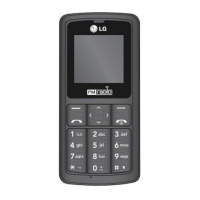The interface to the processor cores consists of a direct physical connection to the TEAKlite DSP bus
and a set of firmware commands to handle communication between the C166S and the audio front-
end which serves as the interface peripheral for audio algorithms running on the DSP or the controller.
The audio front-end Generates interrupts on certain occasions, for example, when exchange of data is
requested. The core interface part of the audio front-end also contains the control and status registers
which are used to set up certain operation modes of the peripheral.
The section next to the core interface contains the digital filters for interpolation and decimation of the
audio signals being received and transmitted. The data path for the receive direction can be set up to
process sampling rates between 8kHz and 48kHz.
The interpolation filters for the respective sampling rates are implemented in a dedi-cated hardware
block and are automatically selected to suite the chosen sampling rate.
Low-pass interpolation filtering, which produces an unsigned 16-bit data stream with a sampling rate of
4 MHz, is performed digitally. D-to-A conversion, postfiltering, and final amplification are performed on
the analog part. The amplifier buffer for voiceband receive does also support ringer functionality. The
ringer functionality is activated by Setting bits RINGSELPN or RINGSELPA in the voiceband part of
the analog control register.
In transmit direction, amplification, prefiltering and A-to-D conversion (analog ∑∆ modulation) are
performed on the analog part. The resulting 2-Mbit/s data stream is filtered by a digital low-pass
decimation filter for further processing by DSP firmware.
Two sampling rates, 8kHz and 16kHz, are supported.
The analog section contains all the necessary analog functional blocks including microphone supply
generation, output and input amplifiers and analog filtering.
3. TECHNICAL BRIEF
- 34 -
Signals Description
EPp1 Main Receiver Positive signal(Differential signal)
EPn1 Main Receiver Negative signal(Differential signal)
EPpa1 Headset signal(Single Ended signal)
Loud1 Speaker Output Positive signal(Differential signal)
Loud2 Speaker Output Negative signal(Differential signal)
MICP1 Main Microphone Positive signal(Differential signal)
MICN1 Main Microphone Negative signal(Differential signal)
MICP2 Headset Microphone Positive signal(Differential signal)
MICN2 Headset Microphone Negative signal(Differential signal)
VMIC Main/Headset Microphone supply power

